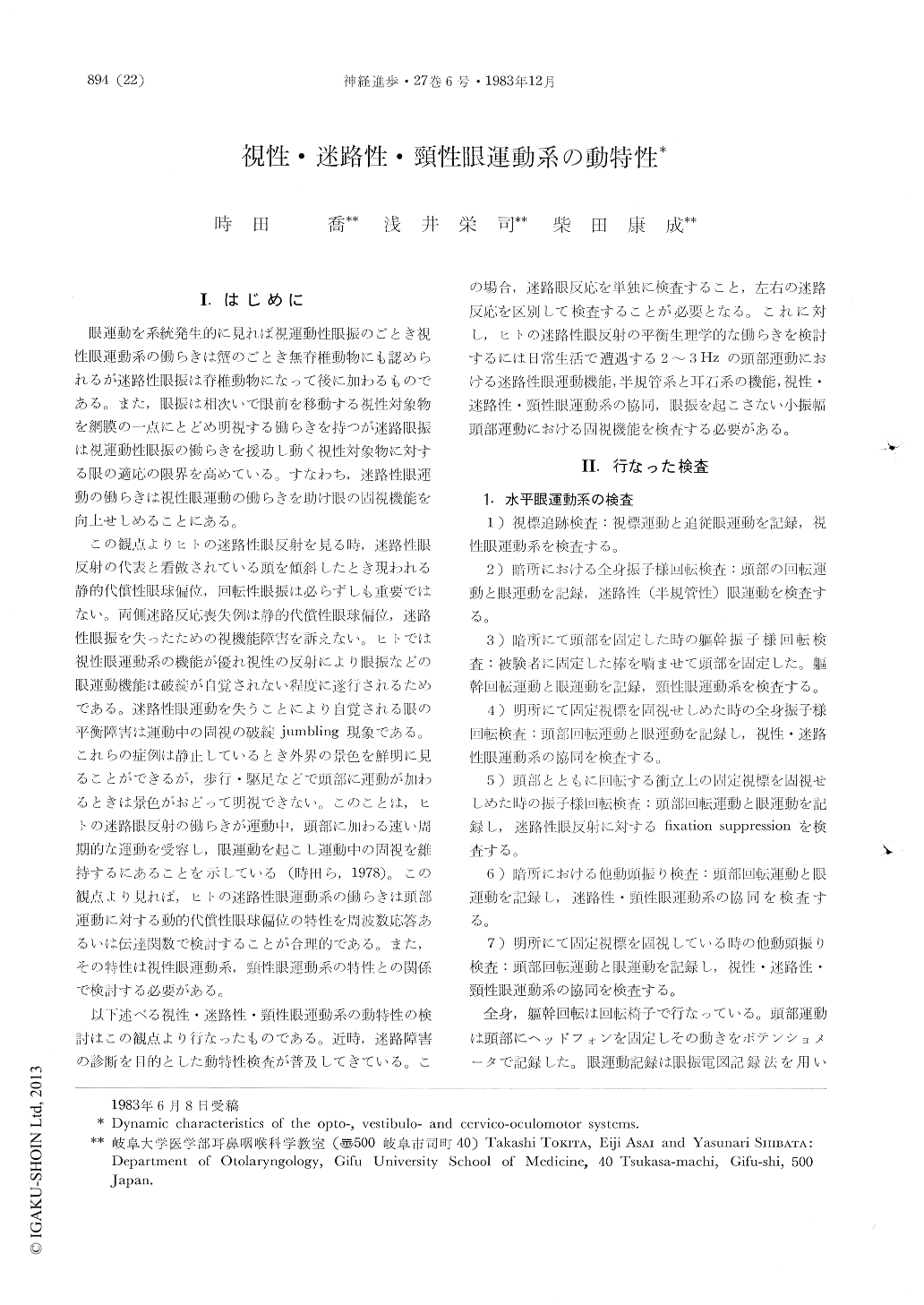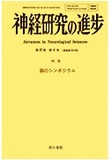Japanese
English
- 有料閲覧
- Abstract 文献概要
- 1ページ目 Look Inside
I.はじめに
眼運動を系統発生的に見れば視運動性眼振のごとき視性眼運動系の働らきは蟹のごとき無脊椎動物にも認められるが迷路性眼振は脊椎動物になって後に加わるものである。また,眼振は相次いで眼前を移動する視性対象物を網膜の一点にとどめ明視する働らきを持つが迷路眼振は視運動性眼振の働らきを援助し動く視性対象物に対する眼の適応の限界を高めている。すなわち,迷路性眼運動の働らきは視性眼運動の働らきを助け眼の固視機能を向上せしめることにある。
この観点よりヒトの迷路性眼反射を見る時,迷路性眼反射の代表と看做されている頭を傾斜したとき現われる静的代償性眼球偏位,回転性眼振は必らずしも重要ではない。両側迷路反応喪失例は静的代償性眼球偏位,迷路性眼振を失ったための視機能障害を訴えない。ヒトでは視性眼運動系の機能が優れ視性の反射により眼振などの眼運動機能は破綻が自覚されない程度に遂行されるためである。迷路性限運動を失うことにより自覚される眼の平衡障害は運動中の固視の破綻jumbling現象である。これらの症例は静止しているとき外界の景色を鮮明に見ることができるが,歩行・駆足などで頭部に運動が加わるときは景色がおどって明視できない。このことは,ヒトの迷路眼反射の働らきが運動中,頭部に加わる速い周期的な運動を受容し,眼運動を起こし運動中の固視を維持するにあることを示している(時田ら,1978)。
Abstract
The function of the human vestibulo-ocular system is expressed most distinctly by the jumblingphenomenon appearing in cases with bilateral loss of labyrinthine excitability. In these cases, the patients can see visual objects clearly when they themselves are at rest, but cannot recognize objects distinctly while in motion, for example, when walking or running. This indicates that the human vestibulo-ocular reflex works to perceive periodic accelerations imposed upon the head, to induce eye movements, and to maintain visual fixation on targets during motion.

Copyright © 1983, Igaku-Shoin Ltd. All rights reserved.


